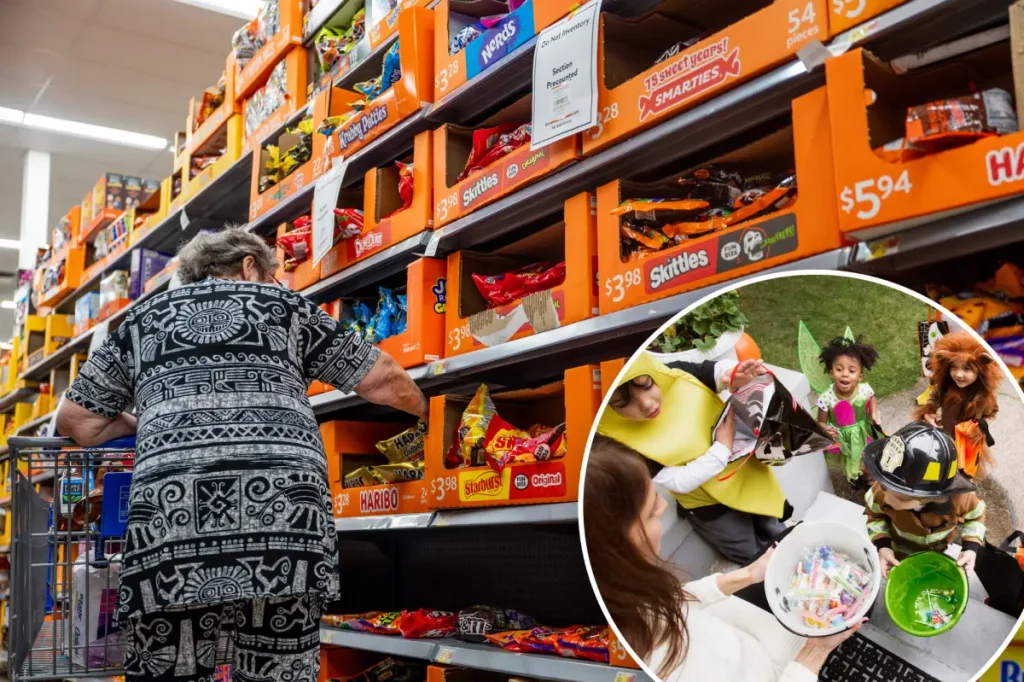Chocolate Takes a Back Seat This Halloween as Non-Chocolate Treats Gain Popularity
In a surprising shift that might disappoint chocolate enthusiasts this Halloween, traditional chocolate candies are losing their dominant position in trick-or-treat bags across America. According to recent findings from market research firm Circana, chocolate’s share of Halloween candy sales has noticeably declined from 52% last year to just 44% in the twelve weeks leading up to October 5th. This represents a significant change in America’s Halloween candy preferences, with non-chocolate alternatives steadily gaining ground. The shift reflects both changing consumer tastes and economic factors that are reshaping how families approach this spooky holiday tradition. As Dan Sadler, principal for client insights at Circana, explained to ABC News, shoppers are increasingly gravitating toward alternatives like gummies, freeze-dried candies, and other colorful confections that offer variety and novelty.
This transformation in Halloween candy preferences became particularly evident in the eight-week period leading to mid-September, when sales figures clearly showed non-chocolate treats outperforming their chocolate counterparts. By September 14th, seasonal sales of non-chocolate candies had grown by 4.5%, while chocolate candy sales experienced a substantial decline of 13.7%. This dramatic reversal suggests a fundamental shift rather than a temporary trend. Beyond just the numbers, Circana’s report highlighted that consumers are actively seeking out more unique and fun candy options this Halloween season. This pursuit of novelty represents a broader cultural shift where traditional favorites are being reconsidered in favor of more diverse and exciting alternatives that promise new taste experiences and visual appeal for trick-or-treaters.
The changing candy landscape can be largely attributed to the dramatic increase in chocolate prices, which has forced many consumers to reconsider their Halloween purchasing habits. Between January 2023 and January 2025, global cocoa prices more than quadrupled, creating significant pressure on chocolate manufacturers and ultimately consumers. This price surge stemmed primarily from poor cocoa harvests in West Africa, a region responsible for producing approximately 70% of the world’s cocoa supply. The economic impact of these harvest shortfalls has translated directly to store shelves, with Sadler noting that chocolate Halloween candy in the United States now costs an average of $8.02 per pound in the weeks leading up to the holiday. In stark contrast, non-chocolate alternatives are substantially more affordable at an average of $5.77 per pound – a difference that adds up quickly when stocking up for waves of trick-or-treaters.
This isn’t the first Halloween season affected by rising cocoa prices. Even last year, candy manufacturers began adjusting their strategies to address the changing market conditions. Mars, the confectionery giant behind beloved brands like M&M’s and Skittles, revealed to CNN that they had already begun expanding their fruity candy and gummy options specifically for Halloween. This strategic pivot wasn’t solely driven by economic considerations, however. The company also cited increasing interest from younger consumers, particularly Gen Z, who appear to have different taste preferences than previous generations. This demographic shift suggests that even beyond price considerations, there may be evolving palate preferences that favor the brighter flavors and varied textures of non-chocolate treats over traditional chocolate offerings.
The appeal of non-chocolate alternatives extends beyond just their lower price point. These candies often offer a broader spectrum of flavors, colors, and textures that create excitement and variety in Halloween candy bowls. From sour gummies to chewy fruit-flavored treats and innovative freeze-dried options, these alternatives provide a sensory experience that differs significantly from chocolate. The visual appeal of colorful candies makes them particularly attractive for Halloween, a holiday that celebrates the vibrant and unexpected. Additionally, some families may be considering allergen concerns, with non-chocolate options sometimes providing safer alternatives for children with certain food sensitivities. This combination of factors – economic, generational preferences, variety, and practical considerations – is creating the perfect storm for chocolate’s declining dominance.
As Halloween approaches, this shifting candy landscape represents more than just changing consumer preferences – it reflects broader economic patterns and cultural evolution. While chocolate will undoubtedly remain a beloved treat for many, its traditional stronghold on Halloween appears to be weakening. For the chocolate industry, this presents both challenges and opportunities to innovate and adapt to changing consumer demands. For trick-or-treaters, it means potentially more diverse and exciting candy collections than in previous years. And for parents purchasing Halloween treats, it offers more affordable options during a time when many household budgets are under pressure from broader inflation concerns. Whether this trend continues in future years will depend on many factors, including cocoa harvest conditions, pricing strategies from manufacturers, and the lasting impact of newly established preferences among younger generations of candy consumers who may carry these preferences into adulthood.


